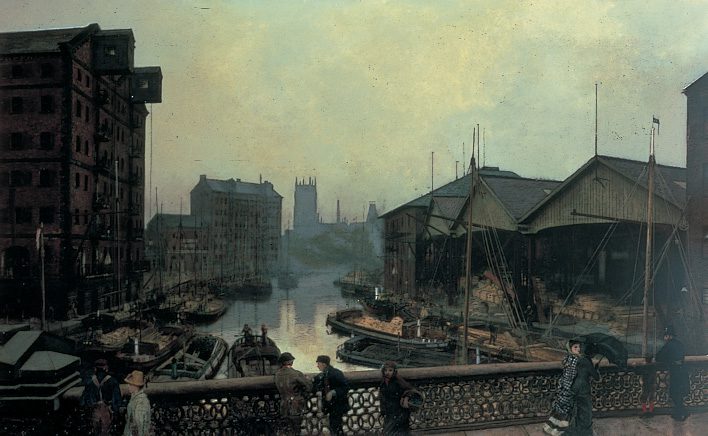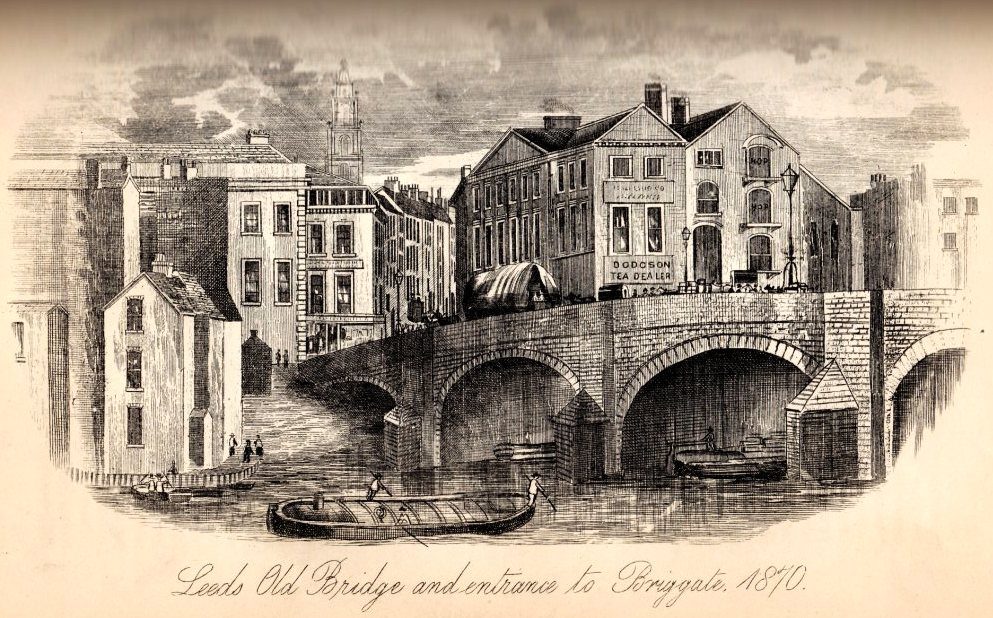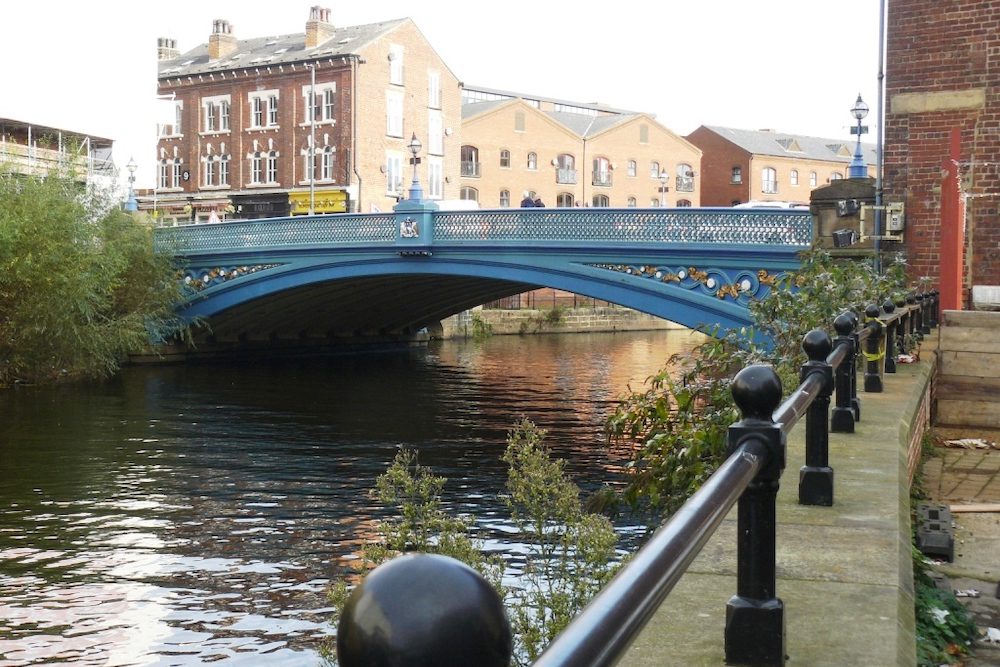The construction of bridges remained a priority throughout the history of civilization. People settled along the rivers, which had always been a vital source of clean water and fertile soil for agriculture. Later, those communities began to search for a practical solution for crossing huge rivers. However, with the gradual development and prosperity of English society, aesthetics began to play an increasingly decisive role. Bridges have evolved from simple river crossings to magnificent local landmarks filled with unique symbolism and interesting traditions, recalling important historical events. Learn more at leeds-future.
Regardless of the complex architecture, important historical significance or amazing natural environment around, each bridge has its own characteristics. The city of Leeds has one of the most beautiful bridges in West Yorkshire.
First mentions of Leeds Bridge
The River Aire was a vital resource for the establishment and prosperity of the settlement on the territory of modern Leeds. Leeds Bridge is a historic river crossing in the city centre. Some researchers claim that the history of the city begins precisely with Leeds Bridge. In addition, scientists tried to collect certain facts and information from the foundation of the old bridge in order to establish the approximate dates of its creation. It is not known how the first townspeople crossed the River Eyre in this area. Still, there is information that the Romans forded across the river to the east of Leeds Bridge.
The Briggate road and the surrounding building plots were created in 1207. They run from the modern Headrow to the river. There was speculation that the building of the area would undoubtedly include a bridge. But the reason for the emergence of Briggate was the increasing rent prices, which were very necessary for the landowners.
However, the bridge actually appeared after several dozen years. It is believed that the wooden bridge was built in Saxon times to make the river crossing for people and domestic animals easier. The first mention of it dates back to 1327. The wooden bridge was 12 feet wide and for many centuries was the only crossing over the river, apart from the old bridge at Kirkstall, three miles upstream.

Mediaeval bridge and market
There was no stone bridge in Leeds until the beginning of the 15th century. The register of William Booth, Archbishop of York, whose pontificate lasted from 1452 to 1464, noted that an indulgence would be granted to all who contributed to the construction of the stone bridge at Leeds.
During the reign of James I (1566-1625), a ferry ran across the river connecting Leeds (or as it was called then Ledes) with the south. All the profit from transportation went to the King’s wife’s account. It was a popular route from York to London.
Later, a mediaeval bridge was built on the site of the ferry crossing over the River Aire. Then local merchants actively developed trade by placing their wool sales points there. Cloth markets were held here on Tuesday and Saturday mornings. Clothiers presented their goods on parapets and in local inns. The beginning of sales in the market was announced by the market bell. By mid-June 1684, the market had become too large and too busy. That is why it was moved to Briggate.

Reconstruction and additions of the old stone bridge
Gradually, intensive development of the city required more space, as the traffic increased every year. Leeds needed a larger bridge, so the old one began to be expanded. Although the townspeople of the time believed that the old stone bridge was the solid structure across the River Aire, it was actually three separate bridges built next to each other. The middle section was the original bridge and the other one on the right was built in 1730. As a result of the expansion, a double carriageway was created. The left section was built in 1760.
Additions were made of simple stone and didn’t feature anything special. The old central stone bridge lasted more than a century. Its lower part was about 10 feet wide, but the road above it was narrower because part of the space was taken up by battlemented walls.
In 1796, the bridge was again expanded and repaired. Until early 1818, Leeds Bridge was the only crossing over the River Aire until the new Wellington Bridge was built. In the spring of 1871, £2,000 was allocated for the reconstruction of Leeds Bridge during a meeting of local councils in Wakefield.
This bridge was the busiest. In 1869, it was estimated that it served 4,000 vehicles and 55,000 citizens.
On April 11, 1871, the local council considered proposals for the reconstruction of the old bridge. In May, all the old buildings were demolished and preparatory work for the construction of the new Leeds Bridge began.

The new history of Leeds Bridge
In the mid-Victorian era, when severe traffic became intolerable, the mediaeval stone bridge, Leeds’ only vehicular bridge, was finally replaced by a modern metal bridge.
On September 20, 1871, the mayor of the city, Alderman J Barran, held the foundation stone laying ceremony for the new Leeds Bridge. That day, the head of the city placed a closed glass bottle in the foundation of the future bridge. Inside the bottle were copies of local newspapers of the time, a photograph of the town hall, specimens of the Kingdom’s coinage of the time and a roll of parchment listing the purchases made by the local property committee with stone laying details.
On July 9, 1873, the mayor of Leeds held an opening ceremony of Leeds Bridge, which was built to replace the old and dangerous one.
The bridge was rebuilt by the British engineer William Henry Barlow according to the project of T. Dyne Steel. Iron was shipped from Stanningley, 5 miles west of Leeds. The low cast-iron fence of the bridge was decorated with rings and flowers. The Corporation of Leeds’ coat of arms was placed on the east side and a plaque with the names of famous statesmen was placed on the west side. In addition, stone from the ruined Kirkstall Abbey was used to construct the steps leading to the River Aire banks. The outer arches were made of cast iron, the inner beams of the arch were made of wrought iron and the flooring was made of steel. Additional safety and stability were provided by transverse beams made of wrought iron.
Leeds Bridge is a Grade II listed national heritage site of Great Britain because of its architectural and historical significance. That is why local authorities and public activists are making every effort to preserve this structure.
Over the years, the bridge has undergone regular technical maintenance, including narrowing the roadways to reduce traffic in the centre. In addition, the structure was strengthened so that buses could continue to run on the usual route. At the beginning of 2018, the bridge was closed for major repairs and reconstruction in compliance with traffic rules. The work included the laying of reinforced concrete and the repair of the original iron structure. Specialists also cleaned and repainted parapets and other elements to restore them to their former glory, as well as protect metalwork from deterioration. The planned reconstruction was fully completed in 2019, thanks to which the bridge preserved its historical charm while being improved from a practical point of view.